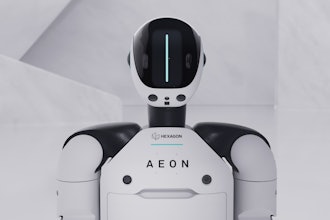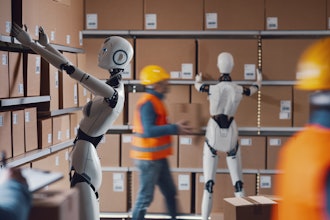Graduation season provides a timely opportunity to discuss recruiting a modern workforce. While graduates are optimistically entering the job market, manufacturers are in desperate need of fresh talent. Yet, the two sides of this equation seldom connect. The key? The right technology solutions.
The problem that just will not go away
This story is not new. Young people full of ambition are posing for the classic snapshots, clad in cap and gown beside glowing parents. Whether it is high school valedictorian speeches or college commencements addresses, illustrious role models stand at podiums and offer words of advice meant to inspire. It is safe to presume, not a single speech will encourage students to seek employment at the nearest manufacturing plant.
All adults want more for their children and grandchildren, nieces and nephews. At some point in our economic evolution, “blue collar” became synonymous with “second-rate”; much preferred are the prestigious desk jobs and positions which involve creative talents, or service-centric opportunities.
That is the problem. The waning interest in manufacturing jobs has left a void. Manufacturers do not just need bodies; they need an influx of the best and the brightest. Engineers, IT professionals, people with skills in math, analytics, science, IT, and problem solving are desperately needed to help companies move into the digital era. They also need some dreamers and visionaries, creative thinkers, and idealists who can envision better products, services and business models.
Those young people are not flocking to manufacturing. For nearly a decade, the issue of retiring baby boomers and the vacant jobs left behind have been a top priority for plant managers. Manufacturing jobs have even become political fodder as both parties vow to bring jobs back – even though current jobs are already vacant, waiting for the skilled applicants to show up.
What can be done?
Some inroads are being made. Manufacturers are continuing to educate their communities about the exciting advances in manufacturing today and join in grassroots campaigns to dispel common misconceptions about the industry. Schools are starting to emphasize science, technology, engineering and math (STEM) courses, and are encouraging girls to take a more active role in these subjects. These efforts, while important, will take time to generate a significant boost in applicants.
Manufacturers need short term answers. Here are seven ways technology can help maximize the productivity of new recruits and turn existing employees into a modern, highly-skilled workforce.
1. Upskilling. Instead of expecting schools and government workforce programs to bear the burden of retraining a population of low-tech workers, manufacturers are increasingly realizing they must lead the way within their own plants. After all, manufacturers will know best what type of new skill sets are needed for changing shop floor demands and keeping pace with innovation.
2. Managing the evolving workforce. Modern Human Capital Management (HCM) solutions help to recruit and retain the new workforce in many ways, including supporting re-training efforts. Knowledge-based programs and applications can help to prepare and present information in consumable segments, while tracking the employee’s progress through certification programs. Understanding the employee’s current aptitude, skillsets and deficiencies — and tracking progress toward achieving new milestones – is important. Software can help to turn the journey into a fact-based process that engages the employee, rather than relying on anecdotal comments or casual one-time observations.
3. Matching the right person for the right role. “You cannot fit a square peg in a round hole”; a cliché that applies to employees and their position. With skilled workers at such a premium, it is more important than ever that a person’s skillset is utilized to the fullest. HCM solutions utilize science to help match workers to specific jobs, so that both the employee and the supervisor are satisfied.
4. Built in best practices. Modern ERP solutions allow users to establish workflows and set operational parameters so that even employees-in-training can easily follow the prescribed procedures. Screens automatically point employees to consider certain questions before moving to the next screen. Or, alerts can pop up when an activity or data point falls outside of standard expectations. If issues reach critical levels, escalation alerts can be triggered so that supervisors are notified. In questions of safety, machines may stop or alarms may sound. Technology can help guide and reinforce proper decisions.
5. Workbenches and dashboards. Even workers who join the workforce with minimal technology skills can quickly become proficient at their tasks, thanks to tools like workbenches and dashboards which can be customized for an individual role or worker. Easy-to-read charts make it simple for workers to monitor personal Key Performance Indicators (KPIs) and make well-informed decisions.
6. Modern user interface. Today’s workforce expects to use software systems that function much like their personal smart phone, tablet, or laptop. They expect convenience and intuitive navigation, like they find in applications. Some advanced ERP solutions feature this pleasing—yet effective—consumer-grade look and feel. This type of interface also makes it easier for existing employees—even ones with minimal tech skills—to be highly productive. Employees no longer need to be IT experts to generate custom reports or drill into the details of a customer order, inventory issue, or billing question.
7. Connectivity and visibility. The modern employee demands the flexibility of mobile solutions and remote connectivity. Workers also have low-tolerance for silos of operation. They want to see the big picture and visualize how their part of the process impacts the larger scheme. Such capabilities allow workers to be highly engaged, accountable, problem-solvers, and creative thinkers – no matter where they are in the plant or when they may have an innovative idea.
These are just a few ways modern ERP and HCM solutions help manufacturers achieve their workforce goals. Other activities, like community events to break down old stereotypes, still need to be on the calendar. The entire industry must collaborate on changing perceptions and, once again, building pride in manufacturing jobs.
So, when congratulating the recent graduates in the family or community, be sure offer them the wise, sage advice: “Get a job in manufacturing. It is exciting, challenging, and your hard work pays off.”
Nick Castellina is Director of Industry Solution and Strategy at Infor.





















